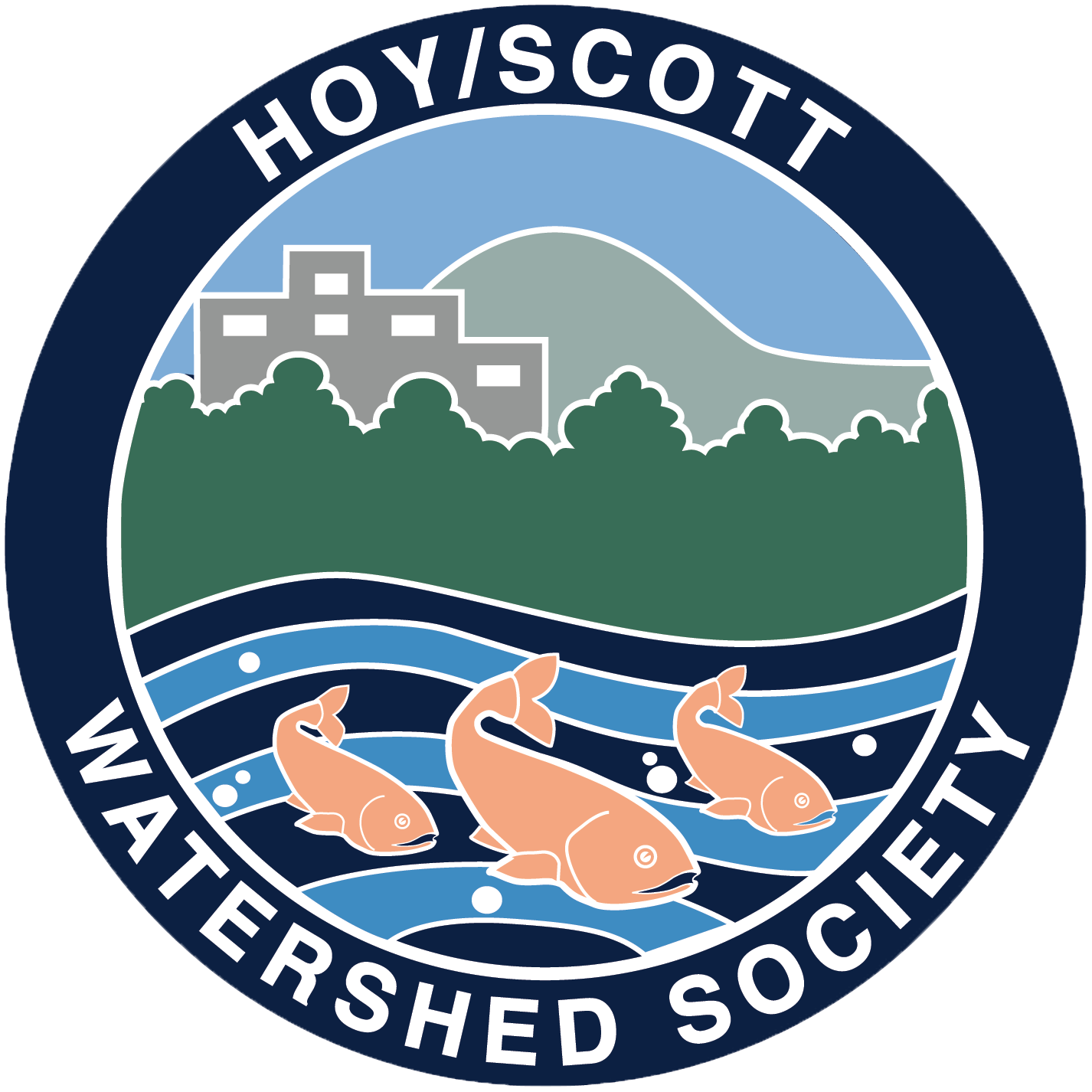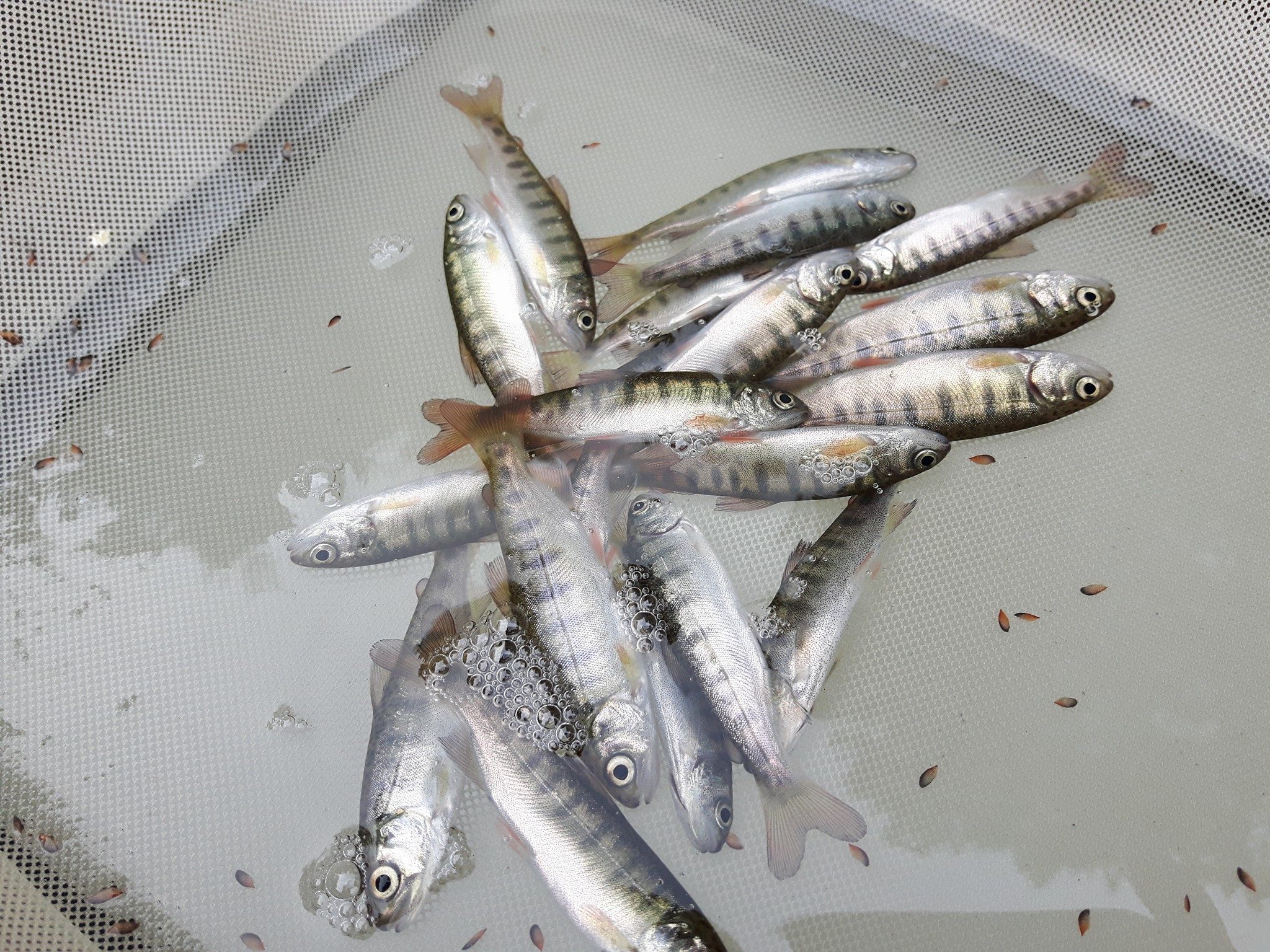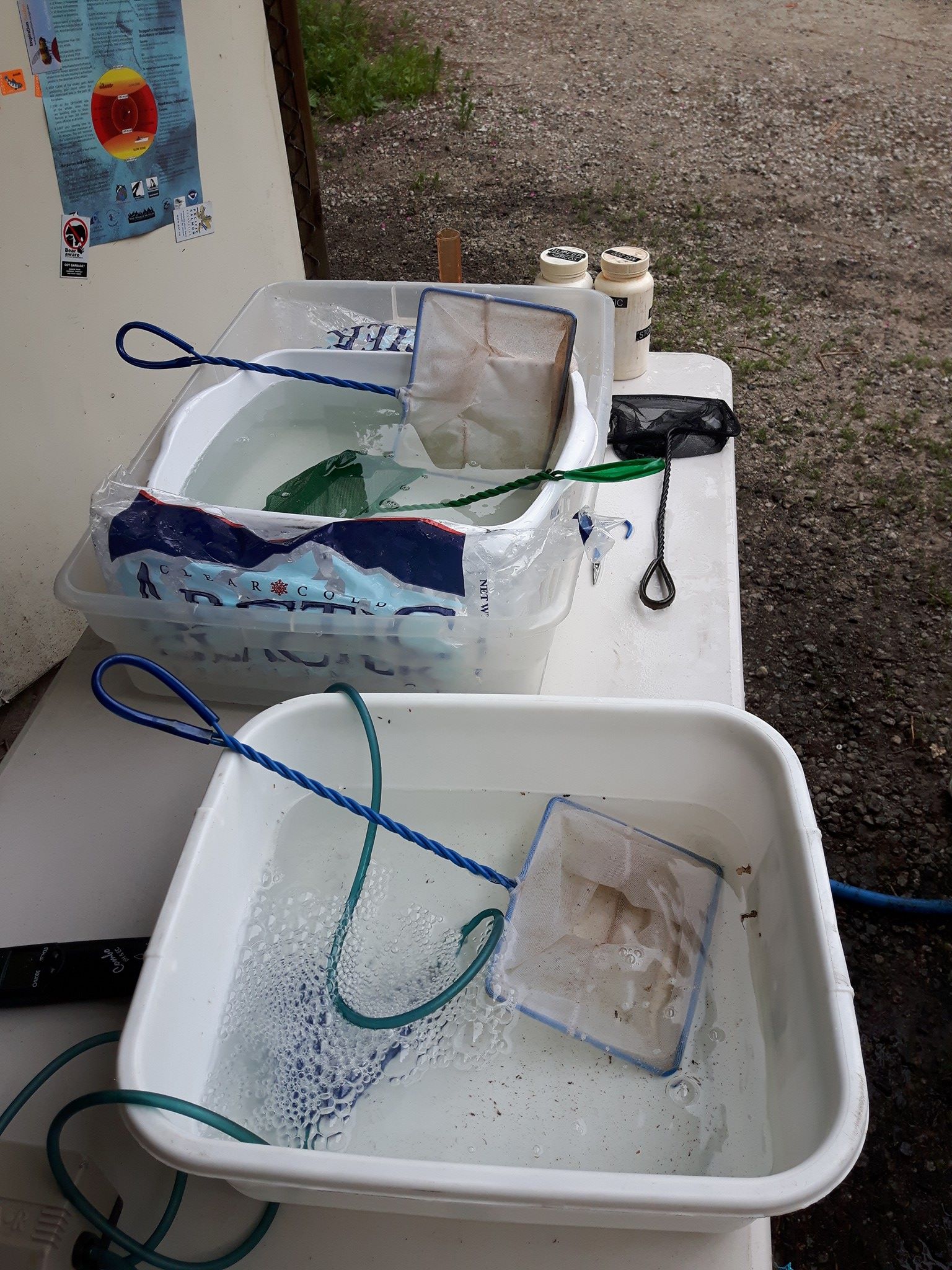Hatchery manager Rodney Lee demos the adipose fin-clipping procedure as Tyler Thibault of the DFO looks on (center).
Close to 6000 coho salmon had their adipose fin clipped as part of a Department of Fisheries Canada encouraged exercise at Hoy Creek Hatchery in Coquitlam on June 20. The salmon are approximately 6 months old. The adipose fin is a soft, fleshy fin found on the top of the salmon, on the back behind the dorsal fin and just forward of the caudal fin.
Although it's not mandatory, the DFO strongly advise hatcheries to clip the adipose fins for several reasons:
- When salmon return to spawn, the clipped fins allow hatcheries to monitor their return
- Most sports fisherman know that clipped coho can be kept, while wild coho must be returned
- Clipped fish returns help DFO assess overall returns, helping to ensure the wild salmon are more dominant.
- The procedure also allows for a manual fish count, whereas previously only weight sample counts took place.
Everyone counts the fish they clip. Close to 6000 fish were processed.
Overseen by DFO fisheries technician, Tyler Thibault, a group of about ten Hoy-Scott Watershed Society volunteers came out to help in the operation. Hatchery manager, Rodney Lee explained the procedure to a few people who were clipping their first time.
First, the fish are anesthetized in small batches. Once in the solution, they become sleepy within minutes. The volunteers stand ready around a table equipped with a trough with flowing water and beds of water for the fish to lay in. Volunteers work quickly and very carefully to clip fins with disinfected surgical scissors before they wake up, which is within about a minute. Fish are put into the outside trough and end up in the bucket at the end of the table. They are returned to the hatchery to recover.
Fin clipping volunteers of Hoy-Scott Watershed Society with Tyler Thibault of the DFO at Hoy Creek Hatchery. (Missing: Nathen Blower)
The fish will soon be transferred from the hatchery Capilano trough room, and will live in the rearing pond until Salmon Leave Home in May 2019. Once they are released, they stay about a year in the stream making their way to the ocean. Fish from this brood could then return in about 2.5 years.
Thanks to all those who helped out this year!
(Watch our VIDEO below).
Hoy-Scott Watershed Society (HSWS) is a volunteer-run non-profit society that operates a small salmon hatchery beside Hoy Creek and conducts a salmon enhancement program in partnership with the City of Coquitlam, and with technical expertise from the Department of Fisheries and Oceans Canada. The group stewards the Hoy and Scott Watersheds, promoting public awareness and education, and is involved in watershed habitat restoration and preservation.







